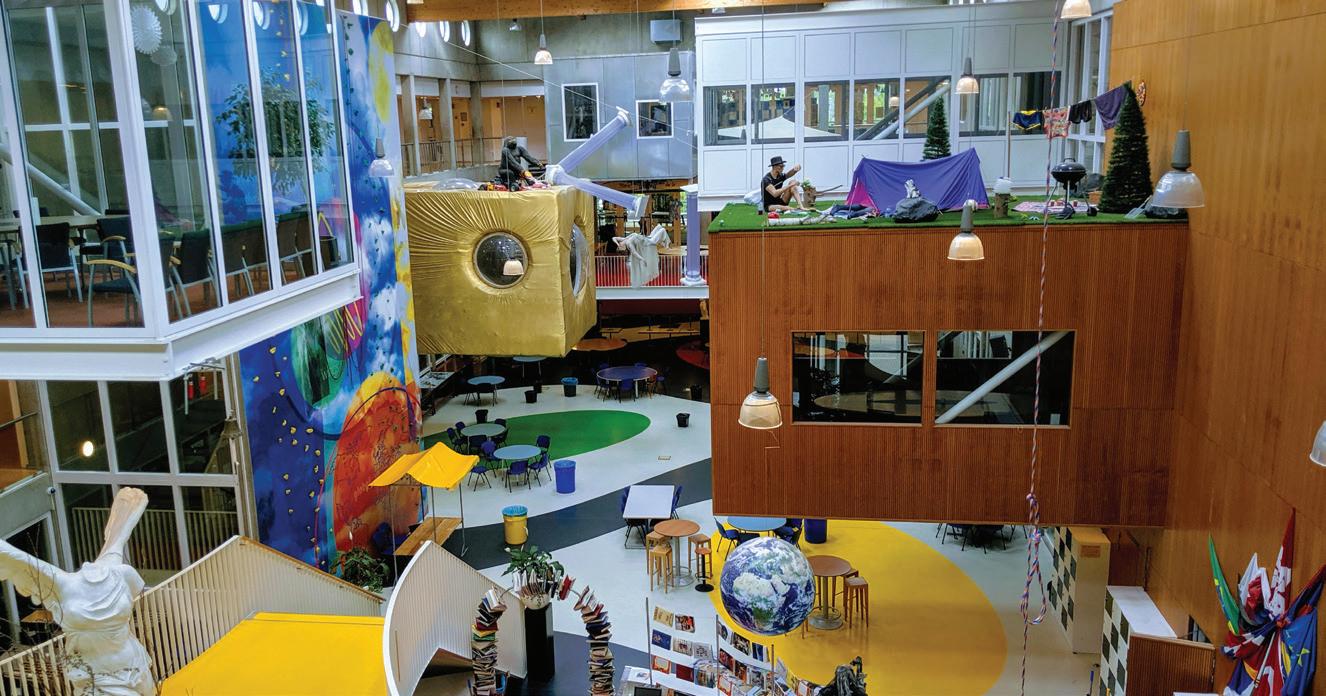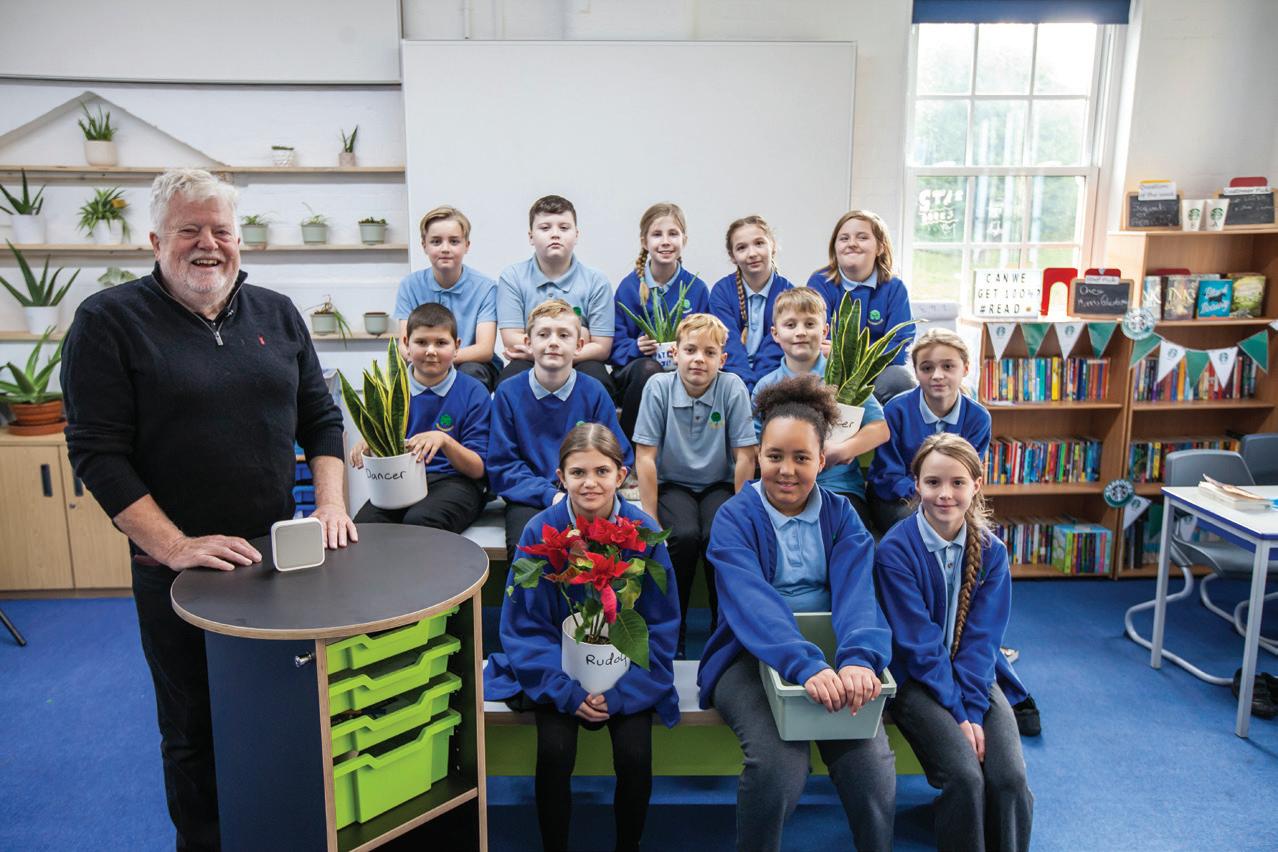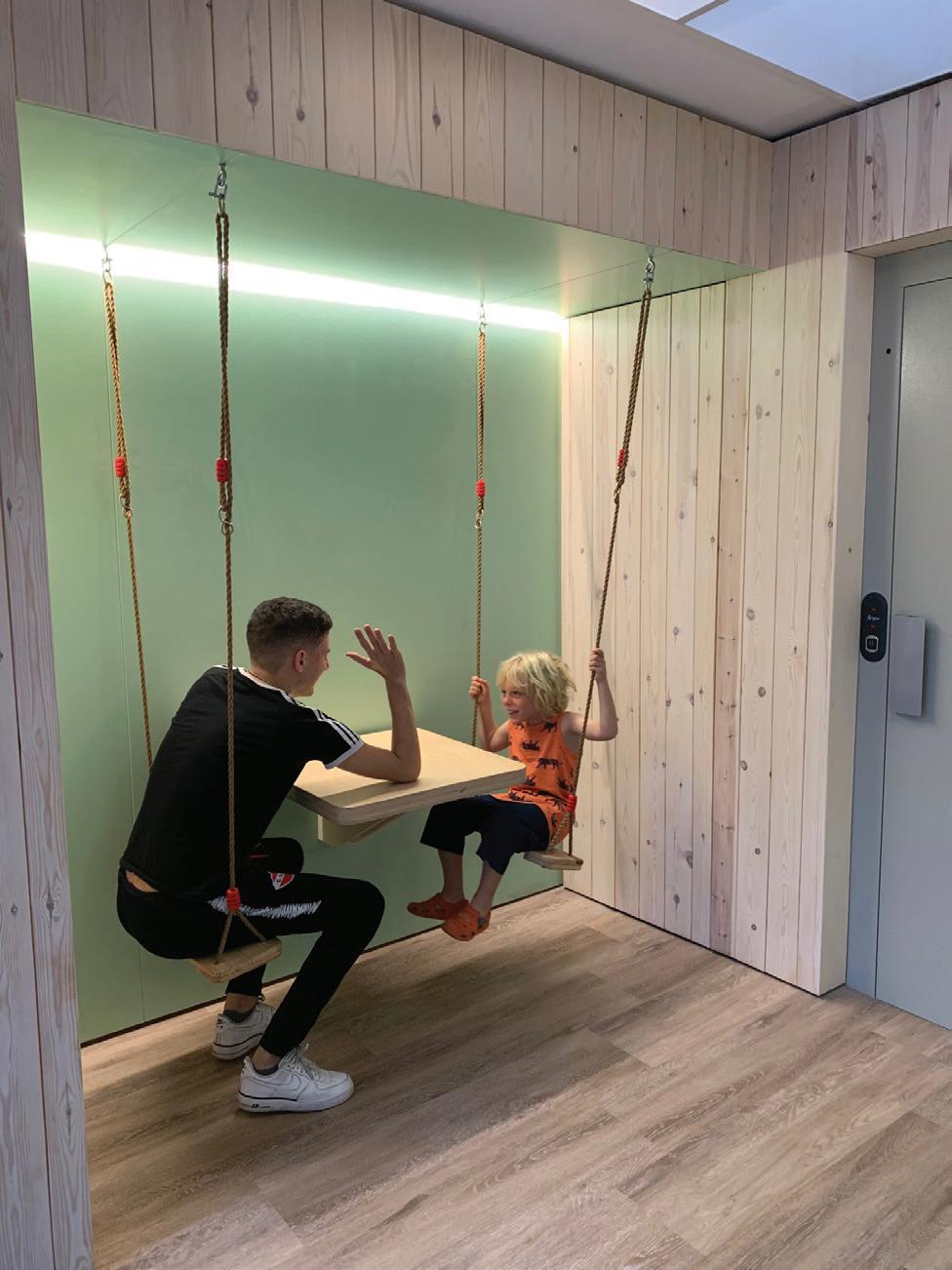
6 minute read
News
SOFA SO GOOD Irena Barker Editor
I remember my school as a grim set of buildings which felt akin to a detention centre for teenagers. Exposed to the flat East Anglian Fens on three sides and the clay pits on the other, we loved our classrooms only for the protection they gave us from the howling winds. We sat for hours on stiff plastic chairs, trying not to drift off to sleep. If you were lucky you could find a seat next to the radiator that was not graffitied with correction fluid. No thought was given to our happiness or sense of belonging. Children were a teeming mass that had to be controlled, not made comfortable. But that, dear readers, was the 90s. Indeed, judging by the fantastic contents of this edition of Planning Learning Spaces magazine, change is well under way. Those who design and run our schools are realising that environment is key. Not just to happiness but better performance in exams and future careers. We are no longer afraid that a strategically placed sofa will lead to academic lethargy; we understand that many children might perform better if they’re allowed to lounge a little. But if lounging isn’t your way of working, maybe movement is what makes your neurons fizz? Our main feature of this edition (page 12) tells the story of Frederiksbjerg School in Aarhus, Denmark, a school where everything is geared around encouraging children to respond to their natural urge to move. A vast climbing wall in the main foyer is the most overt sign of this, but the building has been designed so that every floor has access to outside space. In lessons, children are kept largely on the move, and time sat listening to the teacher is kept to a strict minimum. Corridors are key too, as Dr Robert Dillon explains on page 22. He urges that they become more than a simple network for conveying pupils to lessons. They should be maximised to tell the history of the school, convey the school’s ethos and expectations or even provide exercise points for impromptu workouts. At Three Rivers Academy, the topic of another feature on page 26, corridors are important too. Consultant Gareth Long explains how the school arrived at a plan where the central corridor became a “street” with views into classrooms through large “shop front” windows. This arrangement, Gareth says, created a more adult space, where teachers do not have to be “the ogre on duty” during lesson changes. Children, at last, are given ownership of their learning spaces and trusted to use them appropriately. Even though comfort may not always seem like a priority in schools, it certainly is for furniture designers. Our article on page 32 explores how good ergonomics is more than just a “nice to have”. It is, of course, essential to good learning. Classrooms, on the other hand, may not be, as renowned architect Trung Le tells Murray Hudson in a thoughtful interview on page 8. I hope you enjoy reading this edition as much as I did editing it. Read it at your standing desk. Or sitting on a stool. Or stretched out on a sofa. Whatever works best for you.
Agora Association launched The innovative Dutch school creates a formal structure for schools following their approach. In 2013, Sjef Drummen, Jan Frasen, Bert Martens and Bert Sterken met to write the vision for a new school – one that would radically challenge traditional education practices. Twelve months later and Agora Roermond was founded. It now educates nearly 300 students using a pedagogical approach that focusses on students’ autonomy – one where students determine their own learning journey supported by coaches, or Agorian Masters. By the end of this year, there will be 10 Agora Schools (9 are in Holland with 1 in neighbouring Belgium) educating nearly 800 students. They vary in size from one school that has just 13 students to Roermond with 285. With the aim of extending their vision much wider, outside of Holland and ideally influencing governments, The Agora Association has been formed with the aim of supporting Agora schools, assisting with the recruitment and training of Agora teachers, conducting research and building a network of partners. Most specifically this will be done whilst explicitly involving parents and students. More information can be found at: www.agoraonderwijs.nl
Small School, Big Wins Learning environments guru Professor Stephen Heppell dropped into Fingringhoe CofE Primary in the UK county of Essex to see how pupils and teachers are using their new Learnometer - which measures classroom environmental conditions including temperature, light levels, sound and air quality. Supported by Essex County Council, the 88-pupil coastal village school is involved in a pilot project to improve learning environments. They are collecting data via Learnometer devices, raising pupils’ awareness of the different environmental factors that can affect their learning. This encourages them to make adjustments for themselves and is one of a number of improvements employed by the school including the installation of controllable lighting, acoustic panels and agile furniture from Learniture.

Headteacher Suzy Ryan commented: “Now pupils are starting to understand the impact of environmental factors on their learning, they seem to be more aware of when they are focused and when they are not, and appear to be more motivated.”
PISA: Estonia is top European country in international tests Estonia is the new star of European education, after the publication of the latest results from the Programme for International Student Assessment (PISA). Teenagers in the former Soviet republic came top in Europe for reading, maths and science in the tests taken last year. Worldwide, 15-yearolds in Estonia ranked fifth in reading, eighth in mathematics and fourth in sciences. Estonia’s success story compares to Finland – long held as a model for good education – which performed worse than in 2015 in all three subjects. However, the Finns are still seventh in the world for reading, 16th in maths and sixth in science. Scores for some of the most populous nations in Europe were less impressive, although the UK appeared to be catching up in mathematics, jumping from 27th place globally in 2015 to 18th place in 2018. However, British 15-year-olds ranked 69th out of 72 countries when they were asked about their ‘life satisfaction’, with boys in particular among the least satisfied with their lives. The factor most positively influencing life satisfaction was a sense of belonging at school – something PISA director Andreas Schleicher claimed the UK “doesn’t do so well”. In France, concerns were raised over the finding the country has one of the greatest gaps in performance between the most and least well-off children in the OECD. Spain had a particularly bad year, falling below the OECD average in science and maths. In reading, they’re results were not even published after ‘anomalies’ were detected that indicated students responded unnaturally quickly to the questions – in less than 25 seconds.

Learning for life EU StartUps website recently identified Learnlife as an organisation to look out for now and in years to come. After years of planning and dreaming, Learnlife Barcelona originally opened its doors in 2018. Thoroughly researching global examples of innovative schools and collaborating with highly regarded thought leaders, Learnlife is now building an open ecosystem for lifelong learning, integrating new learning elements, spaces and technologies that are responsive to the needs and challenges of today’s children and future generations. Dr Stephen Harris, Co-Founder and Chief Learning Officer at Learnlife, explained to Anne Knock during her recent visit there, that Learnlife is seeking to shift the paradigm of school by “providing the opportunity to experience learning within a wider ecosystem than traditional schooling. The community is intentionally a mix of adults and teenagers who are all learners together”. Extending beyond Barcelona, it is building a collaborative learning community through its digital platform and physical hubs to empower individuals in a world where creativity and innovation will be needed to solve future challenges. “The wider Learnlife project” Stephen continued, “aims to provide a united platform for people from anywhere in the world who are the active changemakers within their local context.” Anne Knock leads professional learning tours for educators and architects to Europe and North America www.anneknock.com








